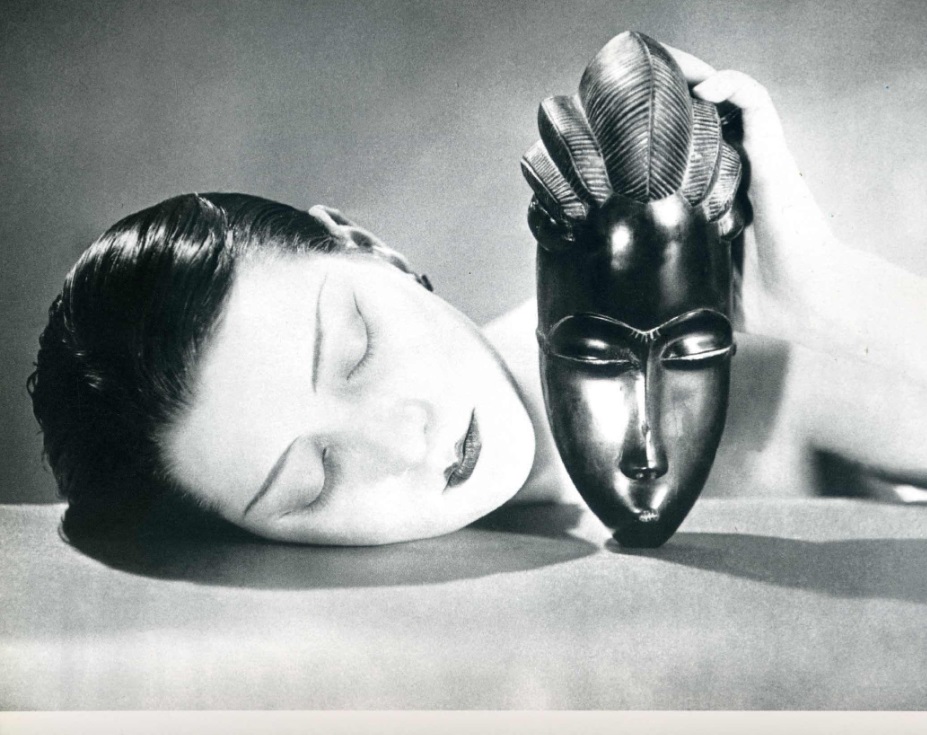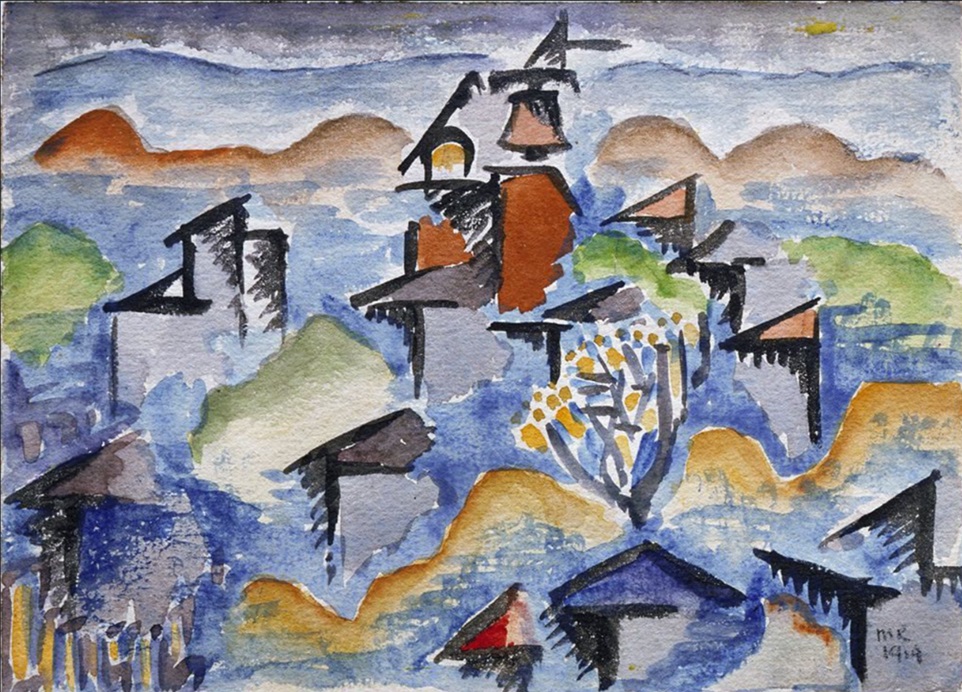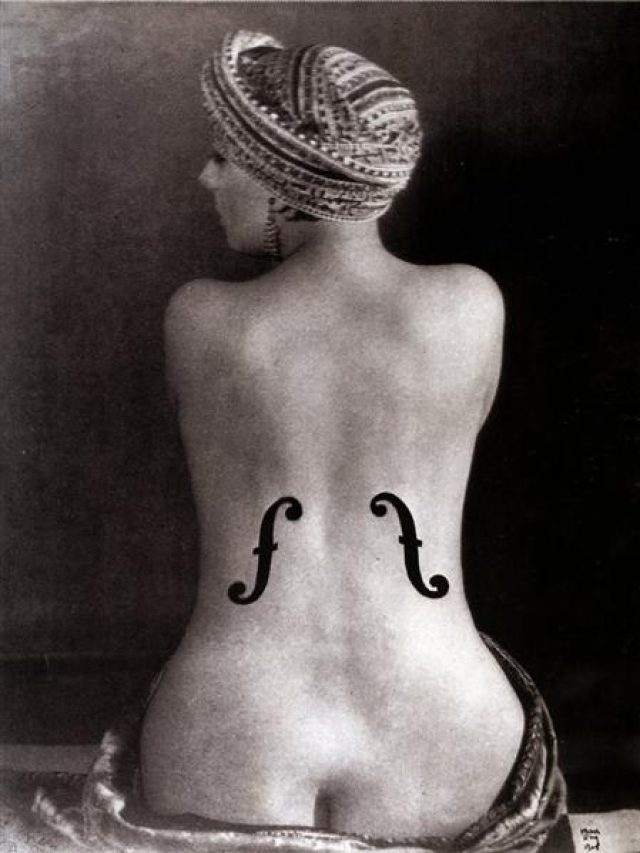Man Ray, born Emmanuel Radnitzky in 1890, is still regarded as one of the most influential figures in photography and art of the 20th century. His groundbreaking work, which has a lasting impact on the art world, encompasses Dadaism, surrealism, and avant-garde filmmaking. Man Ray cleared the path for upcoming generations of artists by pushing the boundaries of traditional creative conventions with his avant-garde methods and unorthodox approach to photography. Man Ray’s family’s relocation to Brooklyn from the United States impacted his early artistic endeavours. He was initially trained as a painter, but after relocating to Paris in the 1920s, he turned to photography as his primary medium. Man Ray’s artistic development flourished in Paris, a bustling innovation centre in the interwar years.
Man Ray’s artistic path was significantly affected by his absorption in the Dadaist and Surrealist movements. Working with other artists such as Marcel Duchamp, he investigated the idea of the readymade and created pioneering photographic processes like solarization and rayographs (photograms). Using these methods, he could go beyond conventional photography and create dreamy and surreal compositions appealing to the imagination.
Man Ray was a renowned portrait photographer who produced memorable portraits of intellectuals and celebrities of his era in addition to his experimental work. His ability to capture the spirit of his subjects while infusing each photograph with a unique artistic vision was demonstrated by his portraits, which were frequently distinguished by dramatic contrasts and unusual angles. His venture into fashion photography also created a lasting impression, impacting the field with his inventive use of arrangement and lighting. Man Ray continues inspiring artists in many fields long after his death. His multifaceted approach to art defied expectations and increased the potential for visual expression by fusing photography with painting, sculpture, and filmmaking. His influence can be seen in modern art movements that value experimentation, abstraction, and the blending of various media.
Enigma and Desire
‘The man who invented his name—he was born Emmanuel Radnitzky—was arguably one of the most enigmatic artists and personalities of the twentieth century. A perpetual experimenter searching for new artistic techniques and processes, Man Ray mastered whatever he set out to do and produced an astoundingly diverse body of work that influenced generations of artists in his wake over more than sixty years. Any attempt to categorize Man Ray would be futile. He was a painter, a draftsman, a maker of Dada and Surrealist objects, a filmmaker (in the early days of silent movies), a chess player, and a writer (both humorous and philosophical), as well as a supreme photographer (working in the Surrealist and avant-garde modes, shooting portraits, pursuing assignments for fashion magazines, and serving as a documentarian of the Surrealist movement). Andrew Strauss writes that his legacy continues to inspire and intrigue artists, scholars, critics, and admirers who revel in the challenge of deciphering the multitude of concepts his art proposes.

Man Ray returned to painting in the late 1930s, producing several of his most crucial Surrealist paintings—dreamlike landscapes tinged with mystery and sexuality. In Les Mains libres (1937), he published sixty of his delicate and incredibly surrealist ink drawings, which marked the beginning of his career. These intriguing, secretly meaning-filled drawings spurred an intense period of 20 years of canvas painting beginning in 1938. This included the decade he spent in Hollywood from 1940 to 1940, culminating in the groundbreaking series Shakespearean Equations (1948–54), and the years following his 1951 return to Paris.
We must add one more incredible endeavour to this impressive list, which Man Ray pursued from his very first artistic endeavours till his death: painting. The painting was listed as the primus inter pares in a catalogue commemorating the artist’s accomplishments during his first major retrospective in 1966 at the Los Angeles County Museum of Art. Other categories included sculpting, painting, making collages and objects, architectural draughtsman, designer, printmaker, chess player, writing, photography, pioneering avant-garde film, inventor, recluse, wit, bon vivant, and intimate of many notable figures in the arts of our century. Throughout his career, Man Ray repeatedly evaded answering questions about the relative significance of painting despite his extensive and lifelong involvement with the medium.
When he arrived in Paris in the early 1920s, he wrote to his American patron Ferdinand Howald, “I have finally freed myself from the sticky medium of paint,” even though he would pick up his brush repeatedly over the following few decades. In 1959, he said, “Everyone will tell you I am not a painter.” It is accurate. However, thirteen years later, in a conversation with the French philosopher Sarane Alexandrian, he claimed to “have two strings to my bow—or instead, two arrows: painting and photography.”
‘It is challenging to separate Man Ray’s incorporation of avant-garde ideas from other American painters’ various interpretations of the same iconography. For instance, Marsden Hartley’s deft interpretation of Cubist flattening produced abstractions in the years 1912–1913 that, in part because they preserve distinct black outlines and rough brushstrokes reminiscent of Cézanne, resemble some of Man Ray’s pieces, including The Rug and Five Figures. Man Ray quickly dabbled with pure abstraction with the Arrangement of Forms and a few charcoal works, much like many of his New York City colleagues. As many academics have pointed out, the Armoury display reinforced the lessons learned in Europe. It gave Man Ray—as he remembered—newfound bravery to take on ambitious projects, writes Ara H Merjian.
A Cinematic Artist
According to Kim Knowles, ‘Man Ray was one of the key figures of the cinematic avant-garde of the early twentieth century; his work with the medium of film remains relatively unknown. Indeed, Man Ray is not immediately associated with the cinema but with photography, admittedly the domain in which his creative talent was most effectively realised. Beginning his career as a painter, he turned to photography in 1915 to create reproductions of his paintings for commercial purposes. A fascination with the technological basis of photography and a desire to explore, master and push the boundaries of the medium led to him becoming one of the most innovative photographers of the twentieth century.

Man Ray used a variety of mediums in his artwork, occasionally combining several modes of expression in one piece. Like other peers, particularly his buddy Marcel Duchamp, he seamlessly transitioned between various artistic mediums, selecting the one that optimally conveys a specific concept. Certainly, cinema contributed to developing Man Ray’s visual concepts by fostering the interplay between different media. His working style is typified by this creative cross-fertilization, which also serves as a valuable foundation for analyzing his cinematic work. Surprisingly, though, not much has been said to link the issues he raises in his photography to the themes and structure of his films.
Conclusion
Man Ray’s work has a deep resonance and, with unmatched inventiveness, bridges the gaps between Dadaism, modernism, and surrealism. His command of photography and his audacious investigation of novel techniques have made a lasting impression on the art world. From his famous photograms to his avant-garde portraits, Man Ray’s art pushes the boundaries of our perception and transports us to a realm of pure fantasy.






